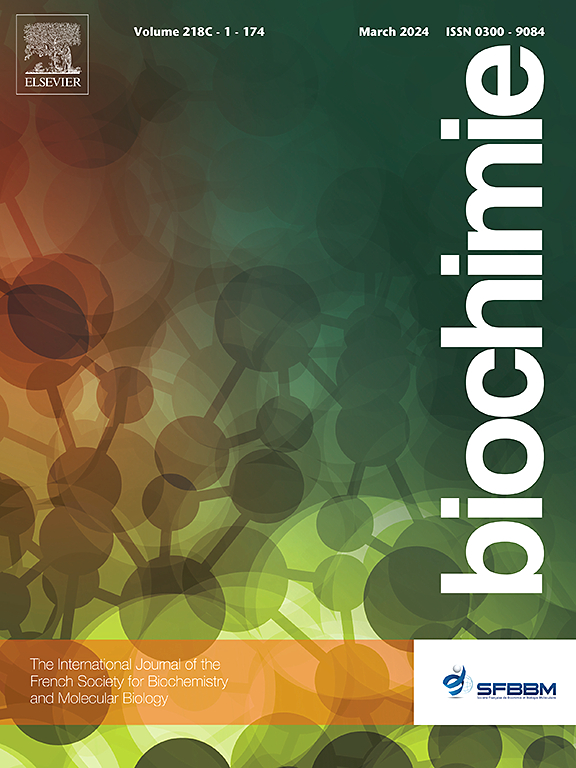Fluor NMR study of amino acid derived ligand to study TSPO
IF 3
3区 生物学
Q2 BIOCHEMISTRY & MOLECULAR BIOLOGY
引用次数: 0
Abstract
Translocator protein (TSPO, 18 kDa), previously known as peripheral-type benzodiazepine receptor, is an evolutionarily conserved membrane protein involved in various physiological processes and patho-physiological conditions. The endogeneous TSPO ligand is a polypeptide of 9 kDa, but dipeptides with biological activity have been previously synthesized and characterized. Herein, we synthesized a phenyl alanine derived ligand with a 19F labelling which opens prospective for 19F-MRI and potential 18F-PET applications. We characterized the coexistence of two conformers that are not equally sensitive to the media used for membrane protein studies. Interaction studies with the recombinant mouse TSPO (mTSPO) in different membrane-mimicking environments are presented using 19F NMR enabling structure/function characterizations. A change in the mTSPO environment from pure detergent to lipid/detergent mixture reveals different exchange rates between bound and free ligand forms. Competition experiments with the high-affinity drug ligand (R)-PK 11195 suggests that phenyl alanine derived ligand binds in the same protein cavity.

氨基酸衍生配体的荧光核磁共振研究TSPO。
转运蛋白(Translocator protein, TSPO, 18 kDa),以前被称为外周型苯二氮卓受体,是一种进化保守的膜蛋白,参与多种生理过程和病理生理条件。内源性TSPO配体是一个9 kDa的多肽,但具有生物活性的二肽已经被合成并表征。在此,我们合成了一种苯基丙氨酸衍生的配体,具有19F标记,这为19F- mri和18F-PET的潜在应用开辟了前景。我们描述了两种构象的共存,这两种构象对用于膜蛋白研究的介质不同样敏感。利用19F NMR进行结构/功能表征,研究了重组小鼠TSPO (mTSPO)在不同膜模拟环境中的相互作用。从纯洗涤剂到脂质/洗涤剂混合物的mTSPO环境的变化揭示了结合和自由配体形式之间的不同交换速率。与高亲和力药物配体(R)-PK 11195的竞争实验表明,苯丙氨酸衍生的配体在相同的蛋白质腔中结合。
本文章由计算机程序翻译,如有差异,请以英文原文为准。
求助全文
约1分钟内获得全文
求助全文
来源期刊

Biochimie
生物-生化与分子生物学
CiteScore
7.20
自引率
2.60%
发文量
219
审稿时长
40 days
期刊介绍:
Biochimie publishes original research articles, short communications, review articles, graphical reviews, mini-reviews, and hypotheses in the broad areas of biology, including biochemistry, enzymology, molecular and cell biology, metabolic regulation, genetics, immunology, microbiology, structural biology, genomics, proteomics, and molecular mechanisms of disease. Biochimie publishes exclusively in English.
Articles are subject to peer review, and must satisfy the requirements of originality, high scientific integrity and general interest to a broad range of readers. Submissions that are judged to be of sound scientific and technical quality but do not fully satisfy the requirements for publication in Biochimie may benefit from a transfer service to a more suitable journal within the same subject area.
 求助内容:
求助内容: 应助结果提醒方式:
应助结果提醒方式:


